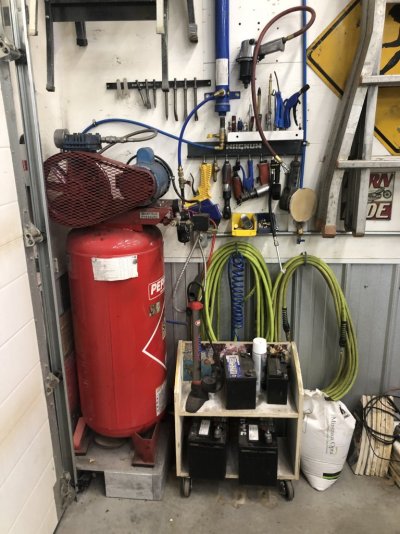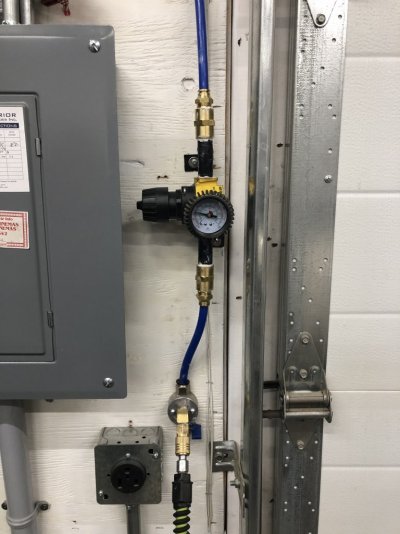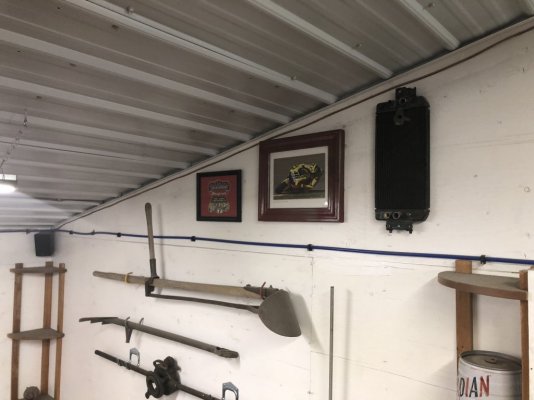Hunter79764
Full Access Member
- Joined
- Sep 1, 2021
- Posts
- 383
- Reaction score
- 613
- Location
- Grand Prairie, TX
- First Name
- Shawn
- Truck Year
- 1987
- Truck Model
- Suburban V20
- Engine Size
- 350
Just a note that might be helpful info for folks wanting to run compressed air as cost-effective as they can...
I've heard good advice about PVC pipe not for use in compressed air systems, being that if/when it fails, PVC shards can be sent at high velocity through the neck of whoever happens to be in the way, but beyond that it seems to be unclear. In some unrelated air compressor research, I found a reference to recommendations from the Plastic Pipe Institute and their recommendations on the matter (see link below to get the source, 2 PDF's attached as well).
It states thermoplastic pipe should not be used for compressed gasses unless it is shrouded or otherwise protected, but does not "Ban" it unless covered by local code. Personally I take that to mean buried lines are ok since the shard potential is gone, and same for running pipe in stable locations where there is not a direct line from the pipe to people nearby (i.e., I'd feel relatively safe running in my metal building Z Purlin at 8' high). This is also in line with the other issue on PVC of UV exposure causing brittleness since anything shrouding the PVC is also likely to block sunlight.
This is common general advice out there, but again, here it is in writing even if it is between the lines. That said, PVC is not very durable, and even if it is safe buried underground, man it would suck to have to dig it all back up when you run a heavy truck through the area and crack a line. And even if the piping is not Line-of-Sight, a shard can easily ricochet and still cause problems.
What is interesting to me as well is the advice on pressure testing PEX with compressed air. To my knowledge, no one has approved PEX for compressed air, but this group draws a comparison between plastic pipe that breaks brittle vs PEX and PE-RT that remains flexible. Air testing PVC water lines is generally a no-no, but this recommends/allows air testing of PEX systems. Note this is not approval for use with compressed gasses so don't use this as evidence for your friendly neighborhood code inspector, but if it is "safe" to test with air, I feel safe using it for distribution in my own shop. It does have some good practical warnings about being careful of fittings and lines turning into whips in a failure, but a 3/4" or 1/2" PEX line anchored every 10' doesn't seem like a huge whip potential to me.
Anyway, just some info some of you might find handy and many might find boring...
 www.plasticpipe.org
www.plasticpipe.org
I've heard good advice about PVC pipe not for use in compressed air systems, being that if/when it fails, PVC shards can be sent at high velocity through the neck of whoever happens to be in the way, but beyond that it seems to be unclear. In some unrelated air compressor research, I found a reference to recommendations from the Plastic Pipe Institute and their recommendations on the matter (see link below to get the source, 2 PDF's attached as well).
It states thermoplastic pipe should not be used for compressed gasses unless it is shrouded or otherwise protected, but does not "Ban" it unless covered by local code. Personally I take that to mean buried lines are ok since the shard potential is gone, and same for running pipe in stable locations where there is not a direct line from the pipe to people nearby (i.e., I'd feel relatively safe running in my metal building Z Purlin at 8' high). This is also in line with the other issue on PVC of UV exposure causing brittleness since anything shrouding the PVC is also likely to block sunlight.
This is common general advice out there, but again, here it is in writing even if it is between the lines. That said, PVC is not very durable, and even if it is safe buried underground, man it would suck to have to dig it all back up when you run a heavy truck through the area and crack a line. And even if the piping is not Line-of-Sight, a shard can easily ricochet and still cause problems.
What is interesting to me as well is the advice on pressure testing PEX with compressed air. To my knowledge, no one has approved PEX for compressed air, but this group draws a comparison between plastic pipe that breaks brittle vs PEX and PE-RT that remains flexible. Air testing PVC water lines is generally a no-no, but this recommends/allows air testing of PEX systems. Note this is not approval for use with compressed gasses so don't use this as evidence for your friendly neighborhood code inspector, but if it is "safe" to test with air, I feel safe using it for distribution in my own shop. It does have some good practical warnings about being careful of fittings and lines turning into whips in a failure, but a 3/4" or 1/2" PEX line anchored every 10' doesn't seem like a huge whip potential to me.
Anyway, just some info some of you might find handy and many might find boring...




